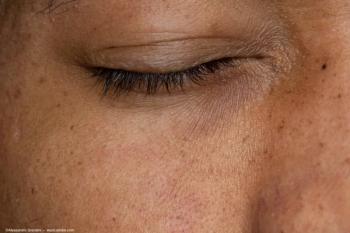
Interim results of pharmacokinetic study: Insert shows benefit as DME treatment
Interim results from the first human pharmacokinetic study of an investigational extended-release intravitreal device for the treatment of diabetic macular edema suggest that it has both significant efficacy and a favorable side effect profile.
New York-Interim results from the first human pharmacokinetic study of an investigational extended-release intravitreal device for the treatment of diabetic macular edema (DME) suggest that it has both significant efficacy and a favorable side effect profile.
The rate of ocular hypertension was very low, particularly in patients who were treated with a low dose of fluocinolone acetonide from the intravitreal insert (Iluvien, Alimera Sciences), and both the lower-dose device and the higher-dose device resulted in 30% to 40% of the patients showing improvement by two or more lines of vision at 90 days and 20% to 30% improvement by three or more lines, said Thomas A. Ciulla, MD, who presented 18-month results from the pharmacokinetic study at the 2009 Retina Congress.
"It's a very exciting time for this device because this small study suggests that it has great potential in DME," Dr. Ciulla said. He is in private practice in Indianapolis.
The 36-month, open-label, phase II study is running concurrently with the pivotal phase III FAME (Fluocinolone Acetonide in Diabetic Macular Edema) study and is designed primarily to assess systemic exposure to fluocinolone acetonide after patients with DME receive the insert. The FAME trial is evaluating the low-dose and high-dose devices in comparison with laser treatment; 2-year results are expected to be announced later this year.
A total of 37 subjects were enrolled in the pharmacokinetic study; 20 were randomly assigned to receive a low dose of the medication (approximately 0.23 µg per day) and 17 were assigned to receive a high dose (about 0.45 µg per day). Inclusion criteria were prior treatment with laser therapy with persistent edema. Visual acuity analysis was performed on the subgroup of patients who entered the trial with acuity of 20/50 or worse, which matches the entry criteria for the larger FAME trial, Dr. Ciulla said.
Interim data, safety results
The interim data showed that 23% of the patients who received the low-dose insert had an improvement in best-corrected visual acuity of 10 or more letters from baseline, as did 55% of the patients who received the high-dose insert, he said.
Safety results from the study showed that no patients receiving the low-dose insert experienced IOP increases of 30 mm Hg or more at any point, whereas 29% of those receiving the high-dose insert had IOP increases of 30 mm Hg or greater during the trial.
"It's hard to draw sweeping conclusions from a small study, but it does suggest that the device is relatively well tolerated in terms of IOP," Dr. Ciulla said.
He added that many of the patients who had been phakic at the beginning of the study developed cataracts following treatment, but this response is not unexpected with any form of corticosteroid therapy.
Sustained therapy
Each insert is designed to provide a sustained therapeutic effect of up to 36 months for the low dose and up to 24 months for the high dose. The agent is inserted into the patient's eye with a 25-gauge needle, which allows for a self-sealing wound.
"There has been a great interest in looking at corticosteroids for the treatment of DME," Dr. Ciulla said. "The . . . implant potentially may be quite advantageous because it may sit closer to the posterior segment of the eye and decrease the local concentration of drug in the anterior chamber, which may minimize the side effects of cataract and glaucoma. Also, it seems to have a very nice sustained-release profile with zero-order kinetics and avoids the peaks and valleys that we observe with in-office intravitreal injections."
Although several agents are being evaluated, no proven, reliable, non-laser-based pharmacotherapy is available currently for DME, he concluded.
Newsletter
Don’t miss out—get Ophthalmology Times updates on the latest clinical advancements and expert interviews, straight to your inbox.


















































.png)


